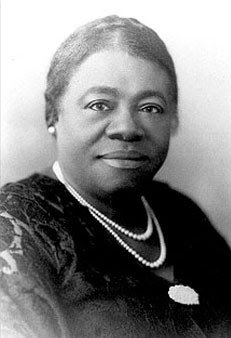 |
| Elizabeth City State University |
Topics: African Americans, Civil Rights, Education, Human Rights, Women's Rights
University of the District of Columbia
Elizabeth City State University
 |
| Elizabeth City State University |
Topics: African Americans, Civil Rights, Education, Human Rights, Women's Rights
University of the District of Columbia
Elizabeth City State University
 |
| Delaware State University |
Topics: African Americans, Civil Rights, Education, Human Rights, Women's Rights
Concordia College, Alabama (closed 2018)
| Link: Twitter/WashingtonPost |
Topics: Climate Change, Civics, Civil Rights, Existentialism, Politics
 |
| Claflin University students in a group |
Topics: African Americans, Civil Rights, Education, Human Rights, Women's Rights
I'm almost halfway to the goal of 500$! If you haven't seen the project yet, you're missing out.
Back any tier of the project and receive a Special Edition of Issue 1!
Other tiers have posters and shirts, or you could even earn your own reoccurring character in the series.
The campaign ends in at the end of the month but don't wait!
Link:.
 |
| Image Source: Link below |
Topics: African Americans, Civil Rights, Education, Human Rights, Women's Rights
The Real Reasons Why 1 Million African Americans Fought in World War II
Black History dot org
 |
| National Institute of Health: The Charles R. Drew Papers |
Topics: African Americans, Civil Rights, Education, Human Rights, Women's Rights
Charles R. Drew University of Medicine and Science
Cheyney University of Pennsylvania
 |
| Image Source: Greater Diversity |
Topics: African Americans, Diaspora, Diversity, Diversity in Science, History, Women in Science
Marian R. Croak, PhD
Senior Vice President, Applications and Services Infrastructure, AT&T Labs
Inducted in: 2013
MoorRey Publishing is excited to announce that,The Altered, by MG Hardie will be published April 9, 2019.
"The Altered" bridges the gap between the seen world and the unseen one.
 |
| Bowie State University, President Aminta H. Breaux, link below |
Topics: African Americans, Civil Rights, Education, Human Rights, Women's Rights
Birmingham-Easonian Bible Baptist College
Bishop State Community College
Office of the President
Building on a Proud Legacy
Greetings from President Aminta H. Breaux (pronunciation key: A-MEAN-tah Broh)
 |
| Image Source: Black History dot org, link below |
Topics: Africa, African Americans, Afrofuturism, Black Panther, Diaspora, Education, History
1. This 14th-Century African Emperor Remains the Richest Person in History, Thad Morgan, History.com
2. The Richest Person in History Was a Black Man (Worth More Than Bill Gates and Jeff Bezos Combined!), BlackHistory.org
 |
| Dr. Mary McLeod Bethune, Founder of Bethune-Cookman University. Bio and link to image below |
Topics: African Americans, Civil Rights, Education, Human Rights, Women's Rights
 |
| An eminent biomedical engineer and orthopedic surgeon, Laurencin is being honored for his unique contributions to the advancement of science. | Courtesy of Cato T. Laurencin |
Topics: African Americans, Bioengineering, Diversity in Science, Research
Dr. Cato T. Laurencin of the University of Connecticut Receives 2019 AAAS Philip Hauge Abelson Prize
Adam D. Cohen, American Association for the Advancement of Science Newsroom
 |
| Image Source: Alcorn State University (Discover Alcorn) |
Topics: African Americans, Civil Rights, Education, Human Rights, Women's Rights
University of Arkansas at Pine Bluff
 |
| Image Source: Custom Ink: #StandWithBennett |
Topics: African Americans, Bennett College, Civil Rights, Human Rights, Women's Rights
Mission
Our History
Guiding Principles
 |
| Rev. Dr. William J. Barber II - image source at link below |
Topics: African Americans, Bennett College, Civil Rights, Human Rights, Women's Rights
Barber to Keynote 59th Annual February One Sit-In Celebration
 |
| Image Source: AccuWeather.com |
Topics: Anthropogenic Climate Disruption, Climate Change, Global Warming, Meteorology
The Polar Vortex Might Be Causing 'Frost Quakes' in Chicago, Rafi Letzter, Live Science
 |
| (Courtesy: iStock/welcomia) |
Topics: Chemistry, History, Physics, Research
Scientists celebrate 150 years of the periodic table at UNESCO headquarters in Paris
Matin Durrani, Physics World
 |
| Figure 1. See link below |
Topics: Entanglement, Modern Physics, Quantum Mechanics, Research, Women in Science
Spin excitations in a cavity hop coherently over long distances Johanna L. Miller, Physics Today
#P4TC related links:
"Spooky Action at a Distance"...October 1, 2011
"Spukhafte Fernwirkung..."March 9, 2012